Selected Objects from the Collection
All Categories
Selected Objects: Judaica Collection (9)
-
Judaica Collection
Our collection of ceremonial objects ranges widely from a valuable eighteenth-century Torah curtain donated by Fromet and Moses Mendelssohn to contemporary ritual items to small kitchen supplies for following Jewish dietary laws.
-

Hanukkah Menorah made by Ludwig Wolpert
Simple, elegant forms and functionality – this menorah, created in 1924, is one of the the first pieces of modern Judaica.
-
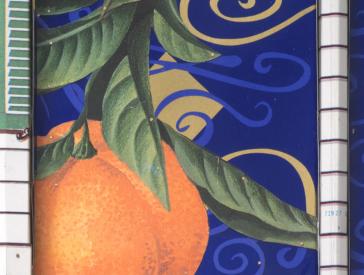
Seder Plate by Harriete Estel Berman
What is unusual about this contemporary seder plate is its additional recess for an orange, marking a new custom which has found growing popularity among feminists in recent decades.
-

Hanukkah Toys
Traditionally, the Jewish festival of lights doesn’t involve presents. But like Christmas, Hanukkah too is increasingly commercialized, and there is already color-coded gift wrap in the US.
-

Purim Costume
This costume of the first Israeli astronaut, Ilan Ramon, should have been a top seller for Purim. But then a tragic accident occurred.
-

Scouring Pads
“No more kitchen confusion!” Three color-coded scrub brushes from the US make it easier to keep track of Jewish dietary rules.
-

Torah Ornaments by Kurt Matzdorf
The artist Kurt J. Matzdorf is known for his modern interpretations. Alongside the classic materials of silver and gold, he used colored acrylic for his Judaica.
-

Torah Curtain Donated by the Mendelssohns
Moses and Fromet Mendelssohn commissioned a Torah curtain, probably using the fabric from Fromet's wedding dress, and donated it to a synagogue in Berlin in 1774–75.
-

Testimonial to a Family
Torah shield (Tas) and box, Kitzingen, 1711/12, purchased in 2014
Online Feature
2021 -

Havdalah Besamim Set by Paula Newman Pollachek
In our interview, the artist talks about how to create community with spice boxes.
Selected Objects: Archive (10)
-
Archive
Browse selected archival holdings online from the eighteenth century through the post-war period. Personal and official documents speak to the life of a nineteenth-century journeyman, early modern merchant rights, desperate attempts to emigrate during Nazi rule, and much more
-
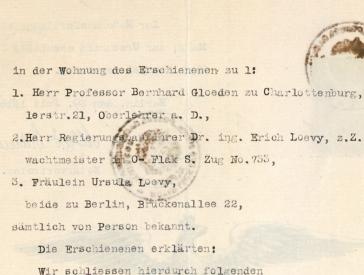
Adoption contract Gloeden and Loevy
Even a Jewish-sounding name could be cause for discrimination. So the siblings Erich and Ursula Loevy chose to be adopted by Bernhard Gloeden, a grammar school teacher and family friend
-
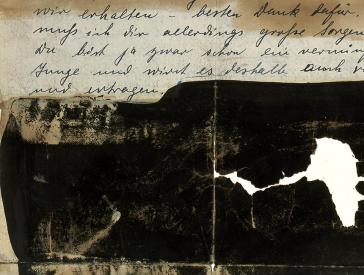
A desperate letter to their son in Sweden
“As long as we are still here, we will write to you every third day,” wrote Paul and Sophie Berliner to their son, Gert, who was living in Stockholm, on 6 November 1941
-
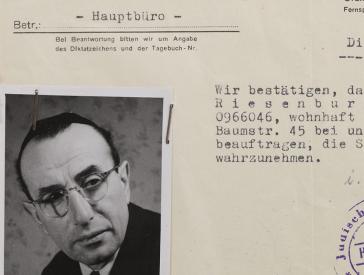
Martin Riesenburger’s Service Card
A provisional document from February 1953 certified that Martin Riesenburger was a rabbi responsible for pastoral care in East Berlin prisons
-
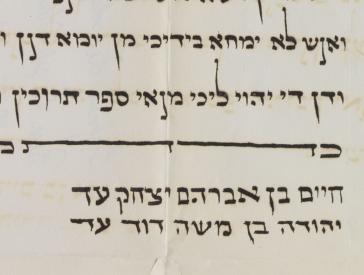
Siegfried Leopold’s Get for His Wife Resi
According to Jewish law, a marriage is only annulled when a bill of divorce is drawn up and presented by the husband to his wife
-

Index cards from the British Army
Thousands of German emigrants fought against Germany in the British Army during the Second World War. In case of capture, they had to change their names, as these index cards document
-
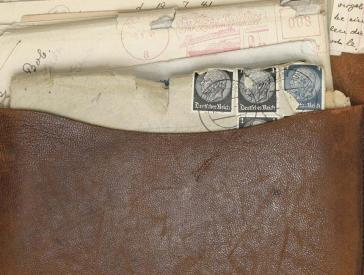
Frieda Neuber’s Leather Pouch
Shortly before being deported to Theresienstadt, Frieder Neuber gave this leather pouch to her niece. The letters inside it document her desperate attempts to leave the country
-

Memmelsdorf Genizah
In February 2002, workers renovating a house discovered a burlap sack filled with papers and personal items when they opened up a section of the ceiling. The house had been owned by Jews from 1775 to 1939
-
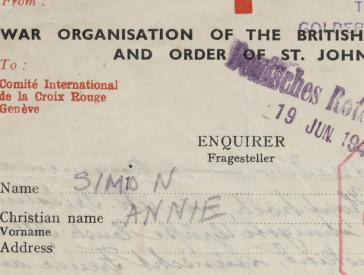
Red Cross Letter to Emmy Warschauer
After the outbreak of the Second World War, the aid organization’s message service gave emigrants a way to contact relatives in Germany. That’s how Emmy Warschauer received confirmation that her daughter was alive
-
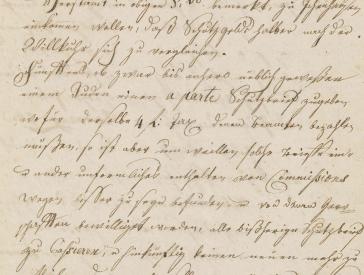
Letter of Protection for the Jews of Ichenhausen
Until the nineteenth century, the residence and trading rights of Jews in the German territories were defined in letters of protection (Schutzbriefe), which had to be purchased
-
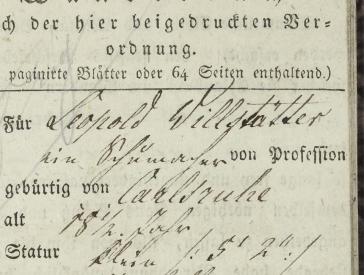
Journeyman’s Book Belonging to the Shoemaker Leopold Willstätter
Leopold Willstätter traveled around southwest Germany and France as a journeyman from 1836 to 1843. The journeyman's book with a precise description of him also served as a form of identification
Selected Objects: Material Culture Collection (10)
-
Material Culture Collection
Our objects from material culture recount Jewish life stories from Germany, attesting to athletic achievements, weddings, professional and military careers, but also disenfranchisement, persecution, and emigration.
-

Flag with the Star of David
In 1935, Martin Friedländer hung a blue and white flag from his window, making a confident statement against the racist Nuremberg Laws
-

Frieda Neuber’s Leather Pouch
Shortly before being deported to Theresienstadt, Frieder Neuber gave this leather pouch to her niece. The letters inside it document her desperate attempts to leave the country
-

Memmelsdorf Genizah
In February 2002, workers renovating a house discovered a burlap sack filled with papers and personal items when they opened up a section of the ceiling. The house had been owned by Jews from 1775 to 1939
-

Model of the Cargo Steamer Max
The Hamburg shipowner Arnold Bernstein received this model of his first ship in 1929 as a gift for his company's tenth anniversary. Eight years later, his career ended abruptly. He was detained and only managed to escape Germany at the last minute
-

Max Haller’s Collection of Medals
Max Haller fought in the First World War for the Imperial German Navy. When SA members threatened him during the April Boycott of 1933, he pointedly placed a velvet cushion with his military distinctions in the shop window
-

Cardboard Key for the Korants’ Wedding
Margarete Apt and Georg Korant received an unusual gift for their wedding on 4 October 1903 in Breslau. The dark brown key is made of cardboard and can be opened
-

Dr. Oscar Hirschberg’s Office Signs
A total of seven office signs used by Dr. Oscar Hirschberg document both his career as a practicing physician and the political changes and antisemitic exclusion during the period of Nazi rule
-

The Sommerfelds’ Thirty-One Keys
Thirty-one keys – that's all that remains of the luggage the Sommerfeld family took with them when they emigrated from Berlin. They only managed to leave for England at the very last minute – just before the Second World War broke out
-

Challenge Trophy from the Oberspree Jewish Rowing Club
The member of the Oberspree Jewish rowing club who logged the most kilometers in the water over the course of a year was awarded a challenge trophy. Fred Eisenberg won the award three years in a row
-

Stamping Hammer, Invented by Gustav Maletzki
This stamping hammer, made around 1930, is one of the patented inventions for which the apparel furrier earned several awards. In 1938, Gustav Maletzki was forced to escape Germany and brought the hammer to exile in Bolivia
Selected Objects: Photographic Collection (6)
-
Photographic Collection
From an early promotional photograph by Yva to documentation of Jewish life in Germany before and after the Shoah, discover selected objects from our Photographic Collection and the stories behind them.
-

“Amor Skin”
The vintage print is an example of early promotional photography. Using multiple exposures, the photographer Yva was able to produce unreal and dreamlike images
-

“White Weeks” at the Ury Department Store
With a brightly lit façade, the Ury brothers promoted “White Weeks” to their customers in February 1930. The promotional campaign testified to their modern business practices and their resulting success
-

Hugo Spiegel as Champion Shot
The photograph by Leonard Freed depicts the father of Paul Spiegel, who would later be president of the Central Council of Jews in Germany. The Holocaust survivor was probably the first Jewish champion marksman in Germany
-

Sally Israel in a Bavarian Costume
Three vacationers in folk costumes gather around the Berlin businessman for a souvenir photo from Bad Reichenhall. The spa town had been a prime destination for Jewish vacationers since the mid-nineteenth century
-

Synagogue in the Jewish Retreat Center in Lehnitz
The synagogue was one of the last in Germany to be dedicated before the Second World War. For many, the retreat center became a place where Jews could assert their identity and culture in a hostile environment
-

Rededication of the Synagogue at the Jewish Hospital
One year after the end of the Second World War, in 1946, the synagogue at the Jewish hospital on Iranische Strasse in the Berlin district of Wedding was rededicated. Gradually, it became the center of community work in Berlin
Selected Objects: Fine Arts Collection (12)
-
Fine Arts Collection
Glance through our art holdings featuring modernist works by Max Liebermann and Lovis Corinth, and commercial graphic art by Louis Oppenheim. The motifs span from biblical and Jewish themes to intimate portraits and Felix Nussbaum’s haunting response to his experience of persecution.
-

Albertine Mendelssohn-Bartholdy as a Bride by August Theodor Kaselowsky
In this painting, Albertine Heine appears to be a Christian Madonna. She holds the ring near her heart, wearing a white dress with her gaze modestly lowered.
-

Biblical map of the Holy Land
This "New and Original Biblical Map of the Holy Land" from 1893 was probably never intended to be used by pilgrims or travelers on the ground.
-

Loneliness by Felix Nussbaum
Nussbaum is nearly unique among artists for his striking examination of his plight as one of the persecuted. He painted it in Brussels, where he was in hiding, in 1942.
-

The Plesch Family Portrait by Max Slevogt
Max Slevogt created this painting of his friend's family in 1928. It captures the intimacy of family life while fulfilling a group portrait's representative function.
-

Composition by Otto Freundlich
Otto Freundlich painted this abstract composition in 1938 – one year after another artwork of his had been branded "degenerate art" in Nazi Germany.
-

Moses Looks upon the Promised Land by Lesser Ury
For artist Lesser Ury, the painting marked the end of a lifelong preoccupation with the figure of Moses. Unfortunately, only a pastel sketch for the painting survives.
-

Petermannchen by Lovis Corinth
Lovis Corinth painted this portrait of his student and wife-to-be during a beach vacation on the Baltic coast. It contains a secret romantic message.
-

Sabbath by Jankel Adler
Jankel Adler's painting Sabbath shows a parlor scene on the weekly day of rest. But the artist has not depicted the festive, pleasurable moment of welcoming the Shabbat.
-

Girl Walking by Elisabeth Wolff
The sculpture by Elisabeth Wolff was a trophy at the first sporting festival held by the Reich Committee for Jewish Youth Associations, in 1934. The artwork has only been entrusted to our collection for safekeeping.
-

Self-Portrait with Straw Hat by Max Liebermann
In this late self-portrait, the artist presents himself as bourgeois in a dark suit and a Panama hat. Two years after his eightieth birthday, he painted himself here with a touch of resignation and melancholy.
-

S. Adam Advertising Poster by Louis Oppenheim
With this poster by the well-known graphic artist Louis Oppenheim, the S. Adam clothing store advertised its products to male and female sports enthusiasts in 1908.
-
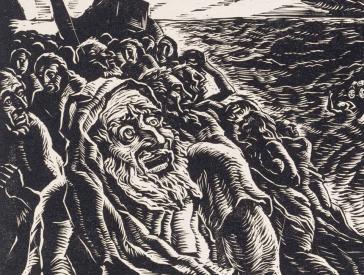
Passage through the Red Sea by Jakob Steinhardt
This woodcut by Jakob Steinhardt illustrates a 1920s Haggadah. The people barely escaped with their lives—as is revealed in the expression on Moses’ face.
Selected Objects: Library (5)
-
Library
Discover treasures from our Library’s collection such as the medieval manuscript Sefer Sinai and the rare first edition of the essay collection Aus drei Jahrtausenden (From three millennia) by Leo Baeck.
-

Leo Baeck’s Essay Collection From Three Millennia
There are very few copies of this book's first edition in existence because shortly after being published in 1938, it was banned
-

Sefer Sinai by Abraham ben Baruch
Medieval manuscript by Abraham ben Baruch is the most valuable object in our library’s holdings. It is one of the few books from the time period that have survived
-

The Complete Horse Connoisseur
This book from 1764, purchased for our permanent exhibition in 2007, is a testament to trade relationships between Jews and Non-Jews in the eighteenth century
-

Tom Seidmann-Freud, Eser sihot li-yeladim
Kleine Märchen (Little Fairy Tales) with artworks for kids, Jerusalem 1923, with link to the digital copy of the book
-
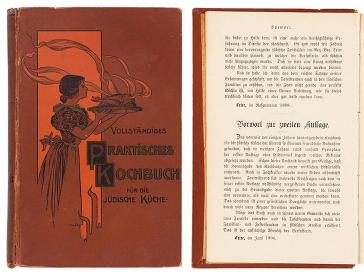
Bertha Gumprichs Complete Practical Cookbook for the Jewish Kitchen
Our library holds the Forth Edition of this best seller of its time, about 1900


